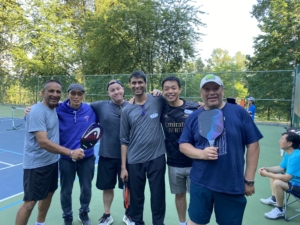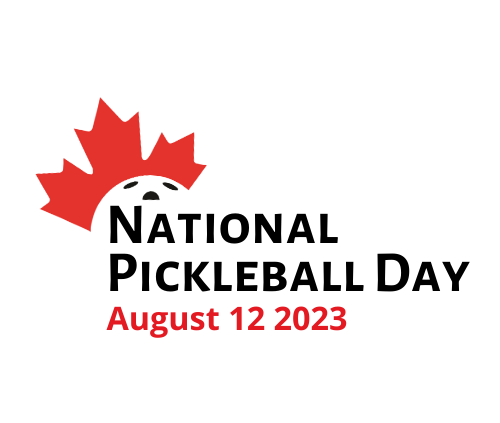If you’ve played pickleball in Canada, particularly in the Greater Vancouver Area, you know there’s a serious shortage of dedicated indoor pickleball courts. This challenge looms largest during the long Canadian winters when outdoor play isn’t really an option for months.
That’s why we’re thrilled to announce that after years of hard work, the Inclusive Place of Pickleball (IPOP) is opening Burnaby’s first-ever dedicated indoor pickleball facility at The City of Lougheed! This is a HUGE win for pickleball players in Burnaby and the Tri-Cities area, where the demand for indoor courts has skyrocketed.
But the big news doesn’t stop there—we’re also expanding to Penticton as part of a state-of-the-art sports facility at Peach City Sportsplex! That’s right… we’re opening not one BUT TWO dedicated indoor pickleball facilities in BC!
Many people have been asking us how we got to this point. This blog will take you behind the scenes of the who, what, where, and when of these exciting projects and show how IPOP is stepping up to meet the growing needs of pickleball enthusiasts like you across BC.
Note: These are major projects with many moving parts, so make sure you follow us on social media @ipopfun and subscribe to our email list to keep up with what’s happening and all our important dates.
Who’s Making the Lougheed Dedicated Indoor Pickleball Project Happen?
First, we’ll dive into the making of the Lougheed location, and then we’ll get into Penticton.
While many people helped along the way, here are the major players who helped bring this dream to life.
IPOP
The driving force behind this project is the Inclusive Place of Pickleball. IPOP’s mission is to provide high-quality pickleball facilities and foster a strong community of players. Our mission is to make pickleball accessible to everyone, offering a place where enthusiasts can play, learn, and grow.
Aurora Consultants
Our trusted partner, Aurora Realty Consultants, specializes in finding the best spaces for dedicated indoor pickleball. Their expertise has been crucial in identifying the perfect location within The City of Lougheed, ensuring that our new facility meets the highest standards for playability and convenience.
SHAPE
SHAPE is the real estate investment, development, and management company behind some of North America’s most impressive centres of gravity. Known for significant projects like The Amazing Brentwood and RC at CF Richmond Centre, SHAPE is also pioneering a new model for urban development at The City of Lougheed.

The proposed ‘The City of Lougheed’ master plan — Source
Where Exactly Will It Be?
IPOP’s new facility will be at 9855 Austin Rd., in the heart of The City of Lougheed, where the old Safeway was located.
The site is easily accessible via three SkyTrain lines and has ample parking, making it convenient for players from all over the region. The surrounding amenities, including shops, restaurants, and parks, add to the appeal, providing a complete experience for visitors.
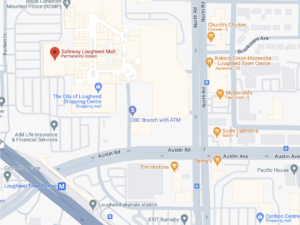
IPOPs dedicated indoor pickleball facility will be located in the former Safeway location at The City of Lougheed in Burnaby, BC — Google Maps Directions
Part of The City of Lougheed Master Plan
The City of Lougheed is a transformative $7 billion, 37-acre master-planned community in the heart of Metro Vancouver, where three SkyTrain lines converge. This ambitious project creates a mini-city with over 20 towers, new shops and restaurants, and more than five acres of parks.

Site Overview of The City of Lougheed
Neighbourhood One is complete, featuring 1,500 homes in four towers, a 22,000-square-foot amenity facility, and a retail experience anchored by PriceSmart Foods. With its strategic location and extensive transit connections, The City of Lougheed is set to become a vibrant hub of energy, diversity, and community. IPOP will be a significant part of it.
What’s Going To Be in the Lougheed Location?
The new facility will feature nine full dedicated indoor pickleball courts, a pro shop, a yoga space, corporate event areas, changing rooms, practice amenities, and more.
Long-term Vision
We don’t just want to put up some nets and lines — we want people to enjoy themselves and want to come back! The goal is to create a premier destination for pickleball enthusiasts, offering everything needed for a top-notch playing experience under one roof.
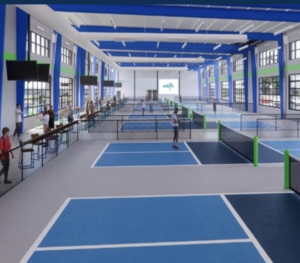
Artist’s rendering of the indoor courts.
Why Are We Doing This?
Burnaby and the surrounding areas have long needed a dedicated indoor pickleball facility. According to Chris White, IPOP’s Chief Paddle Officer, there is no dedicated indoor pickleball in Burnaby, the Tri-Cities, or even north of the Fraser River. This new facility at The City of Lougheed will be the first of its kind in these regions.
With the upcoming closure of Cameron Community Centre, which only plans to offer two multi-use basketball courts, the need for dedicated pickleball courts in the area has become even more apparent.
The numbers don’t lie: Pickleball is the fastest-growing sport in America (and Canada), and the demand for more courts continues to rise. Our new facility will address this shortage and provide a space where players can enjoy the game year-round.
How Did Lougheed Finally Get Done?
It takes a village to raise an idea like this from seedling to reality, meaning this project came together with the help of many dedicated people and organizations.
IPOP partnered with SHAPE, which owns and is developing the property, and Aurora Consultants, which identified the perfect space for the project. Together, these organizations have worked meticulously on the planning and development process to ensure that the facility meets the highest standards.
Besides significant business partnerships, countless others have contributed time, money, effort (their sanity!), ideas, visions, and suggestions to give us all an indoor space where we can play the game we love with friends and family. A big thank you to everyone who has and continues to help grow IPOP!
When Is Lougheed Opening?
IPOP aims to open its first dedicated indoor pickleball facility at The City of Lougheed in winter 2024—before the new year. Our team is working tirelessly to ensure everything is ready for this exciting launch. Stay tuned for updates (follow us on social media @ipopfun and subscribe to our email list).

IPOPs other new facility will be in Penticton at the new Peach City Sportsplex.
Help Us Bring the Peach City Sportsplex to Life in Penticton!
Lougheed is just the beginning…
We’re also excited to announce that IPOP will be part of the Peach City Sportsplex, being developed at 955 Timmins Street, Penticton, BC. This privately financed project will transform a pre-existing warehouse into a state-of-the-art sports center featuring eight indoor and nine outdoor pickleball courts (17 courts!).
The facility will also boast two NHL-sized hockey rinks, a grand slam baseball and softball training center, a dryland strength and athletics facility with Fraser Athletics, and a licensed food and beverage viewing mezzanine. Additionally, several entry-level studio and 1-bedroom apartments will be developed to help address the housing shortage in Penticton—all at no cost to the public.
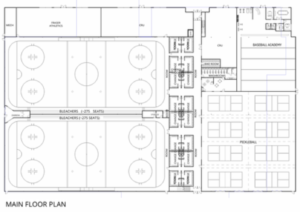
The Peach City Sportsplex’s indoor floor plan has eight pickleball courts and another nine outdoor ones (not shown).
But we need your help to make this vision a reality!
City Council is listening, and your voice can make a difference. Fill out a feedback form and show your support for more sports, training, and recreation opportunities in Penticton. Together, we can bring this much-needed space to life.
Learn more about the project here and sign the petition here!
Conclusion
The opening of IPOP’s first dedicated indoor pickleball facility at The City of Lougheed is a landmark achievement for us and the entire pickleball community.
This wouldn’t have been possible without the incredible support from our team, Aurora Consultants, and SHAPE, who helped turn this dream into a reality. We’re thrilled to address the growing need for indoor courts in Burnaby and beyond, offering players a space to enjoy the sport year-round.
But we’re not stopping there! With our expansion to Penticton at the Peach City Sportsplex, we’re creating even more opportunities for players across BC to experience top-quality pickleball. These new facilities mark a huge step forward in our mission to build an inclusive, vibrant pickleball community.
Follow us @ipopfun and subscribe to our email list to stay updated on both locations. Thank you for your support—we can’t wait to welcome you to the courts!


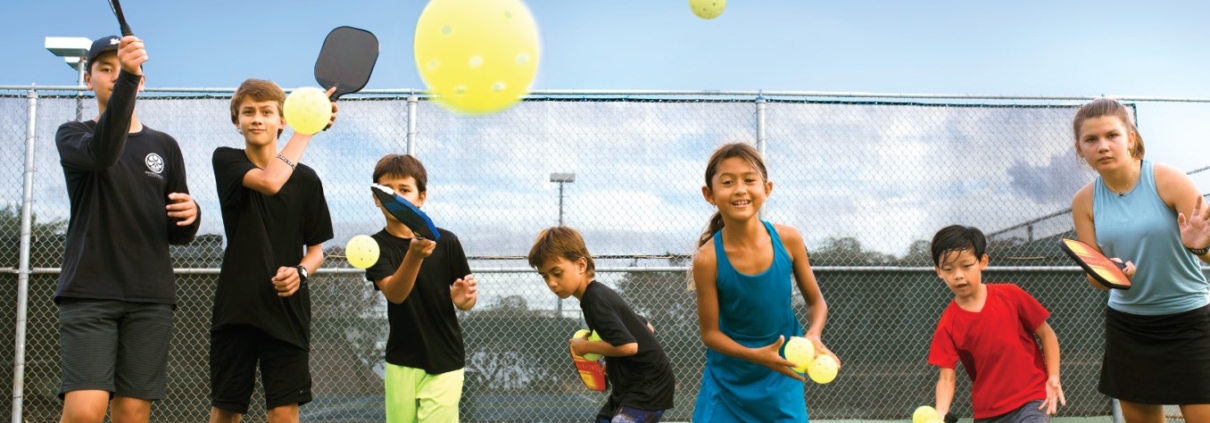
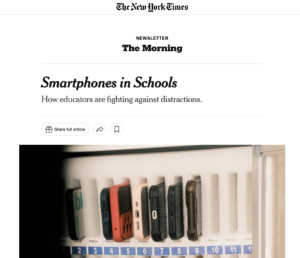






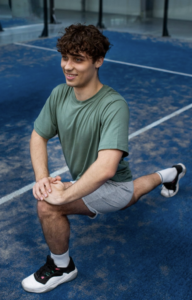
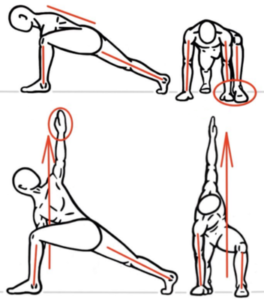
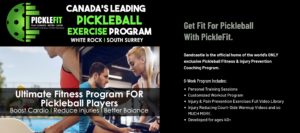





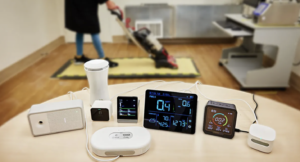

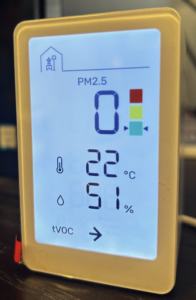
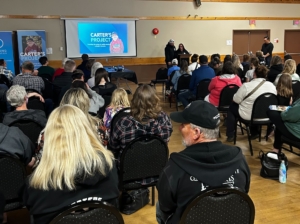
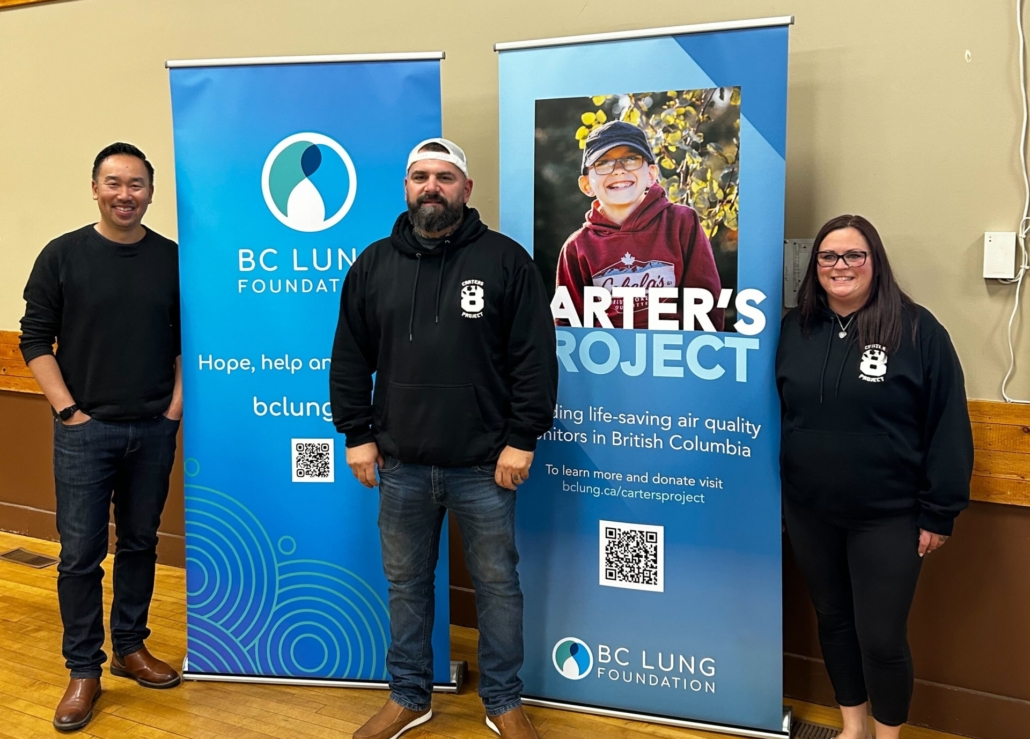
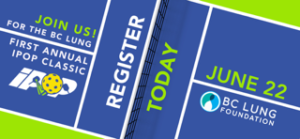







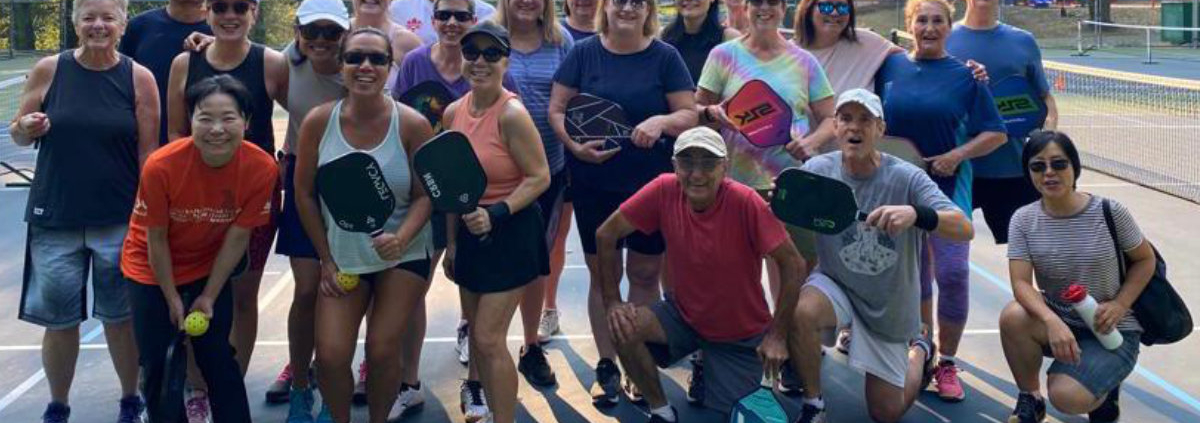
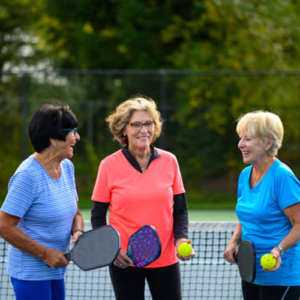

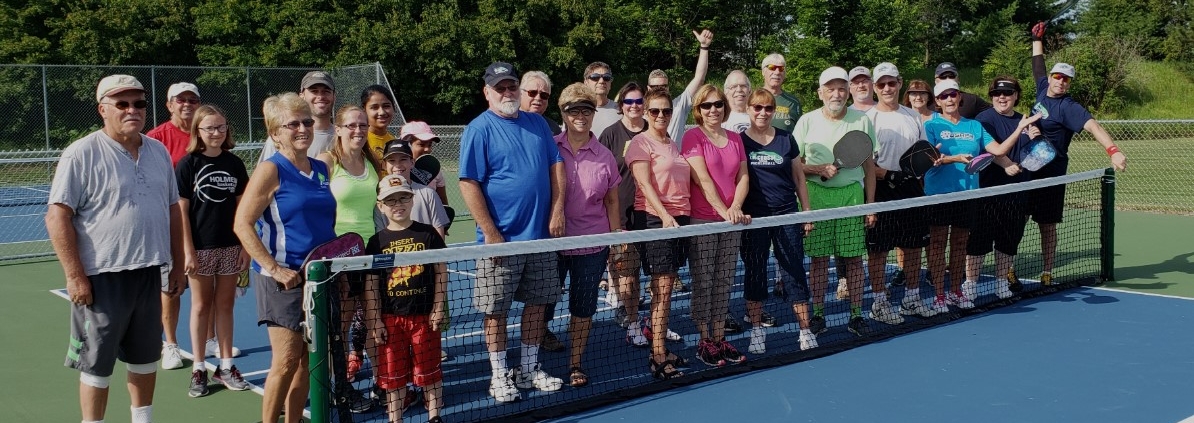 open commons
open commons 

